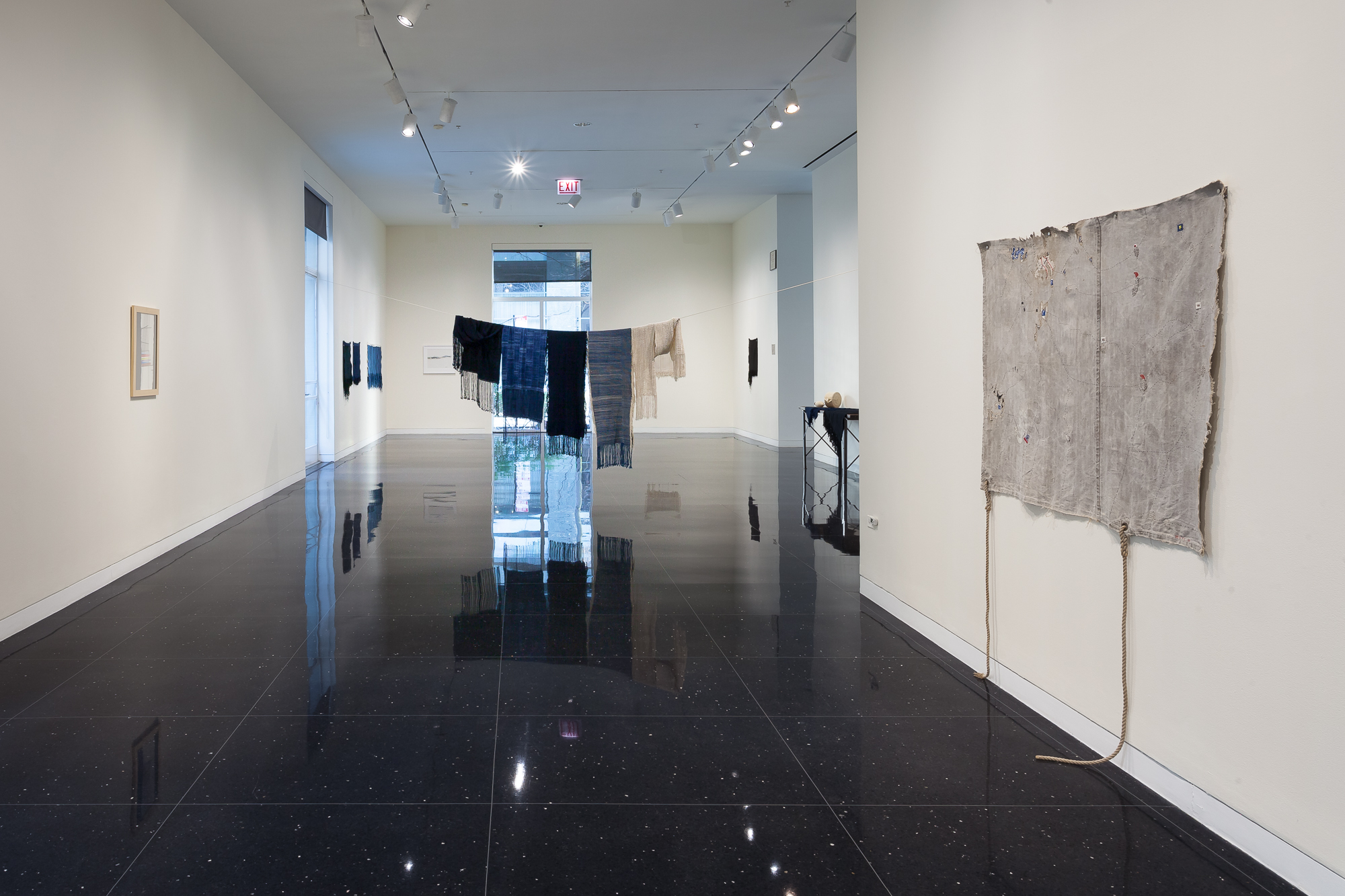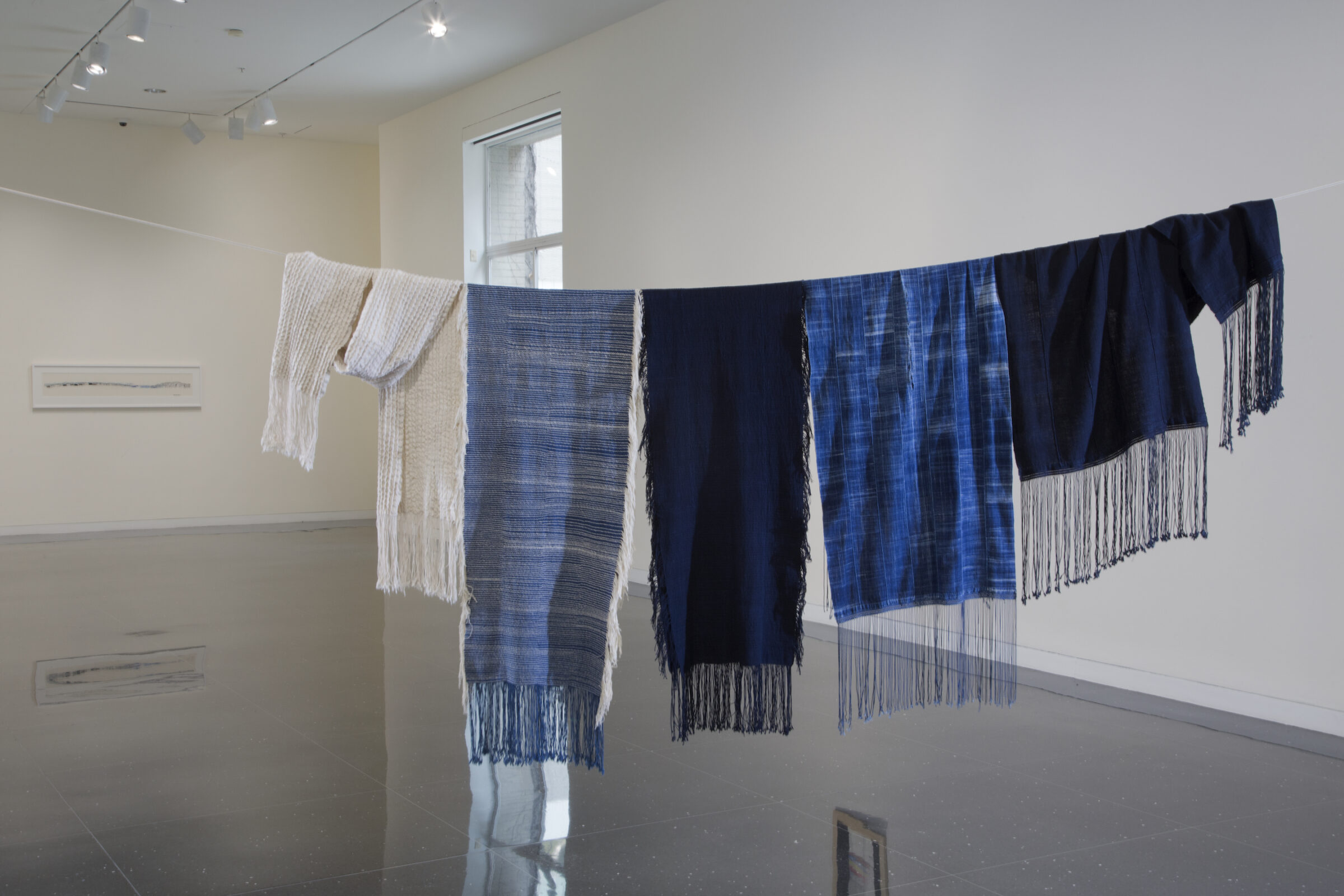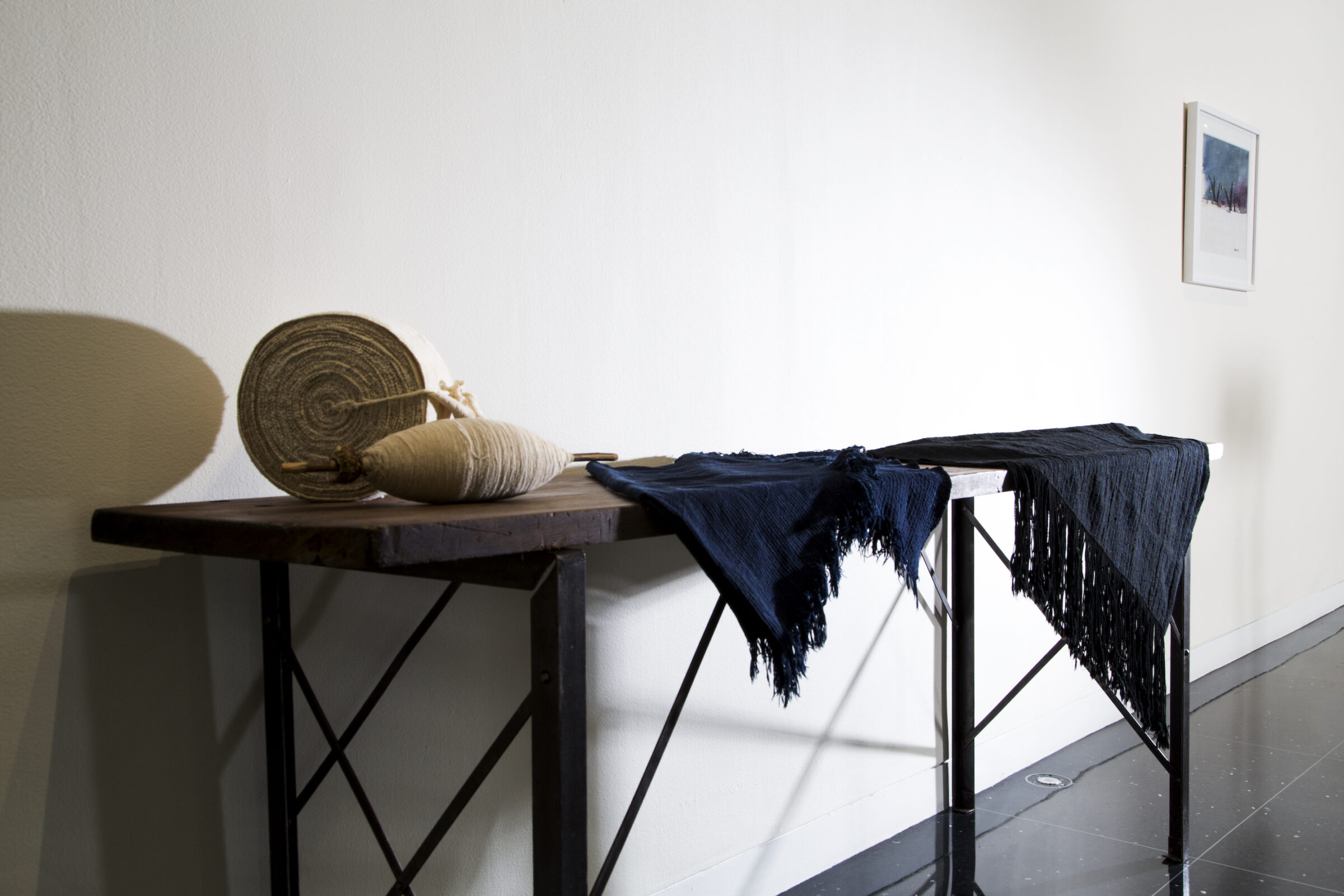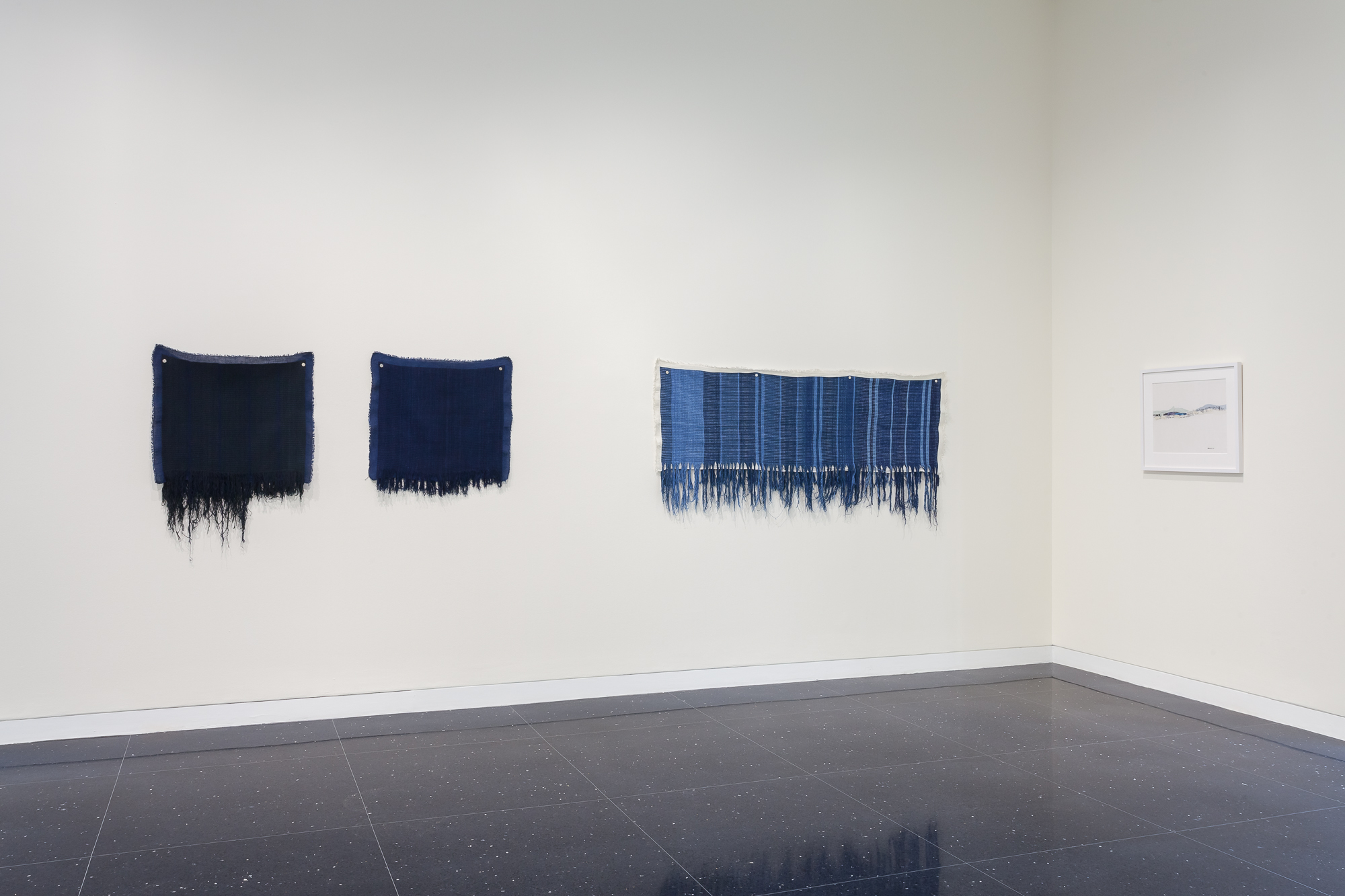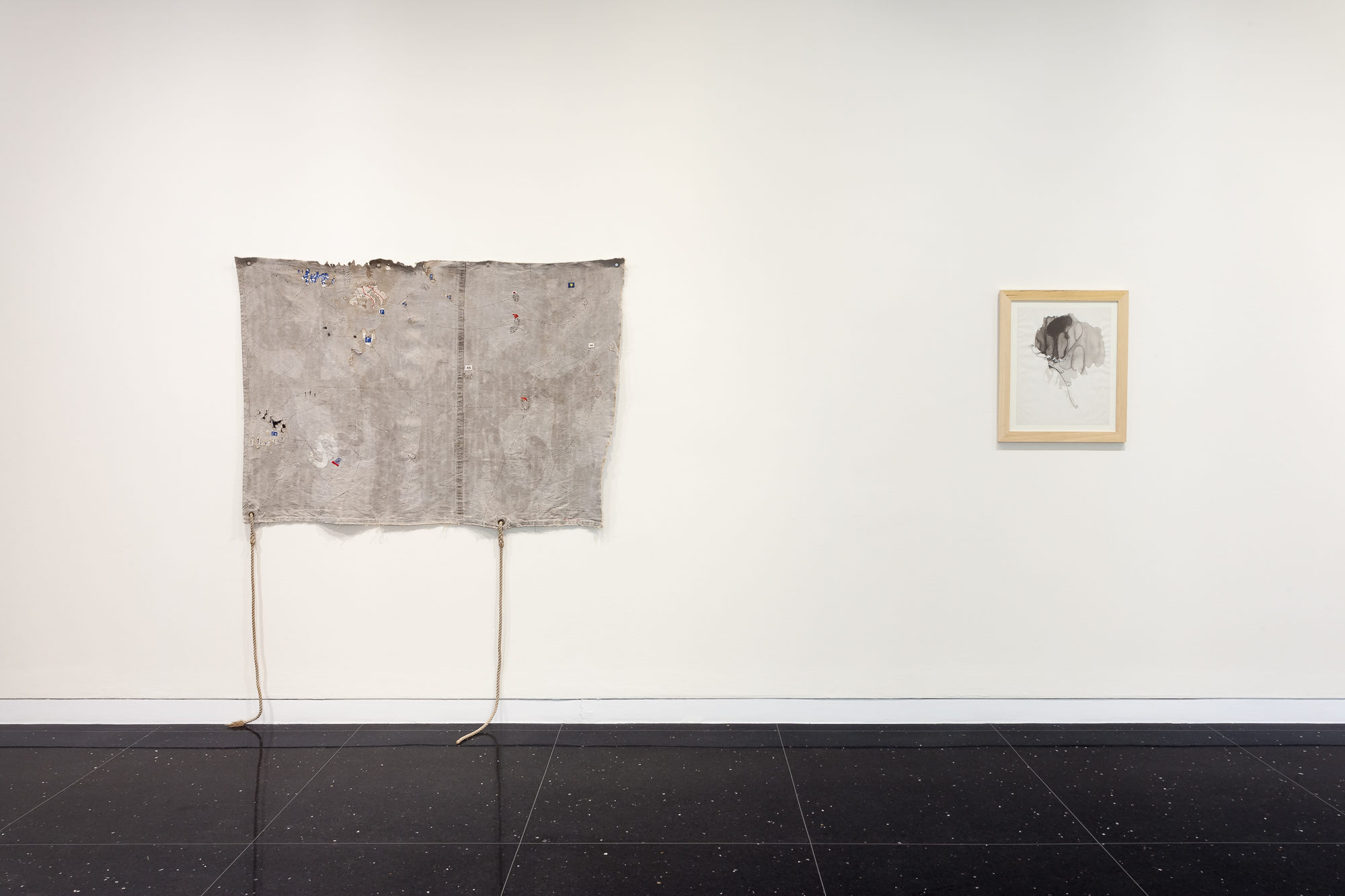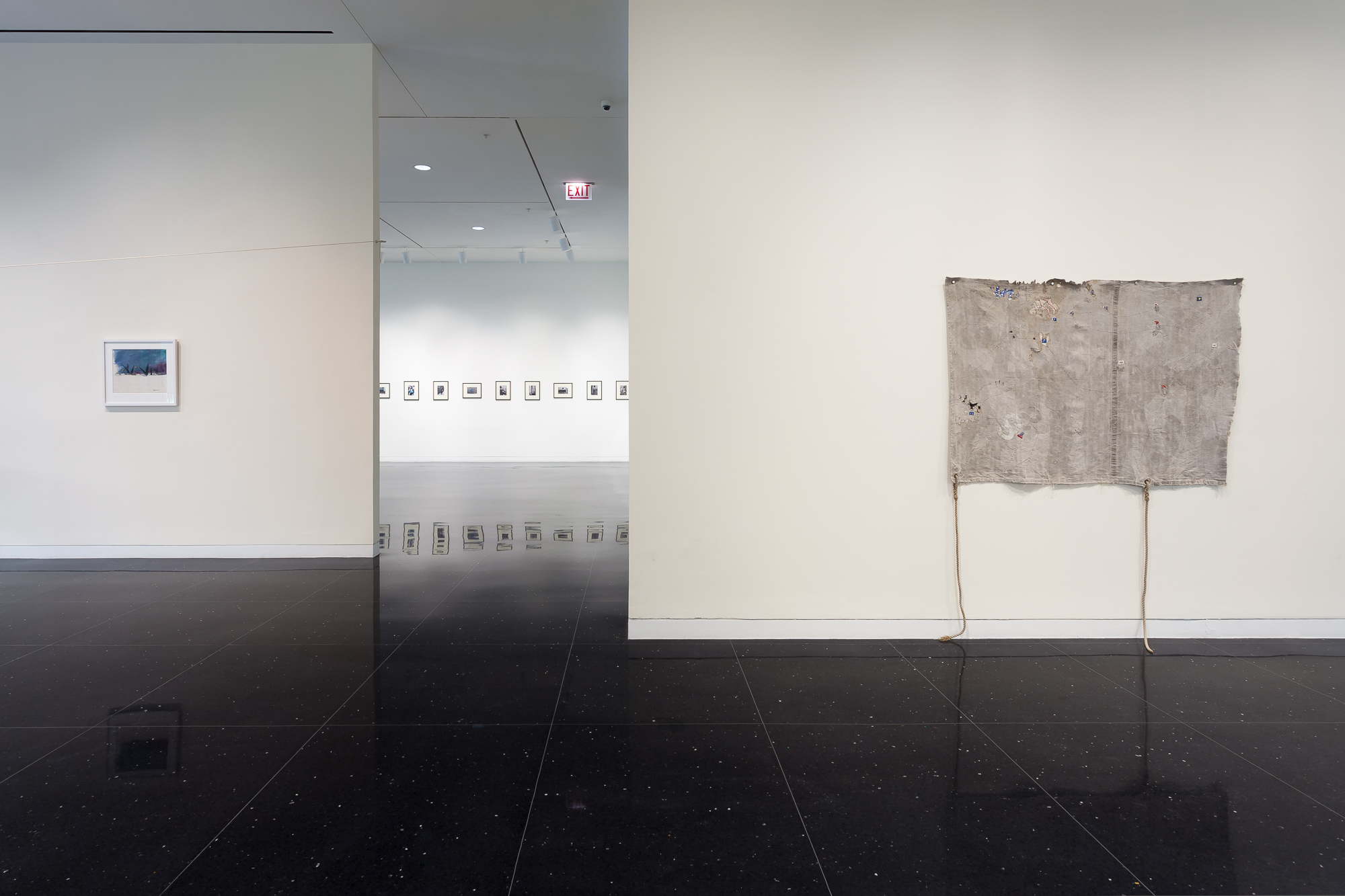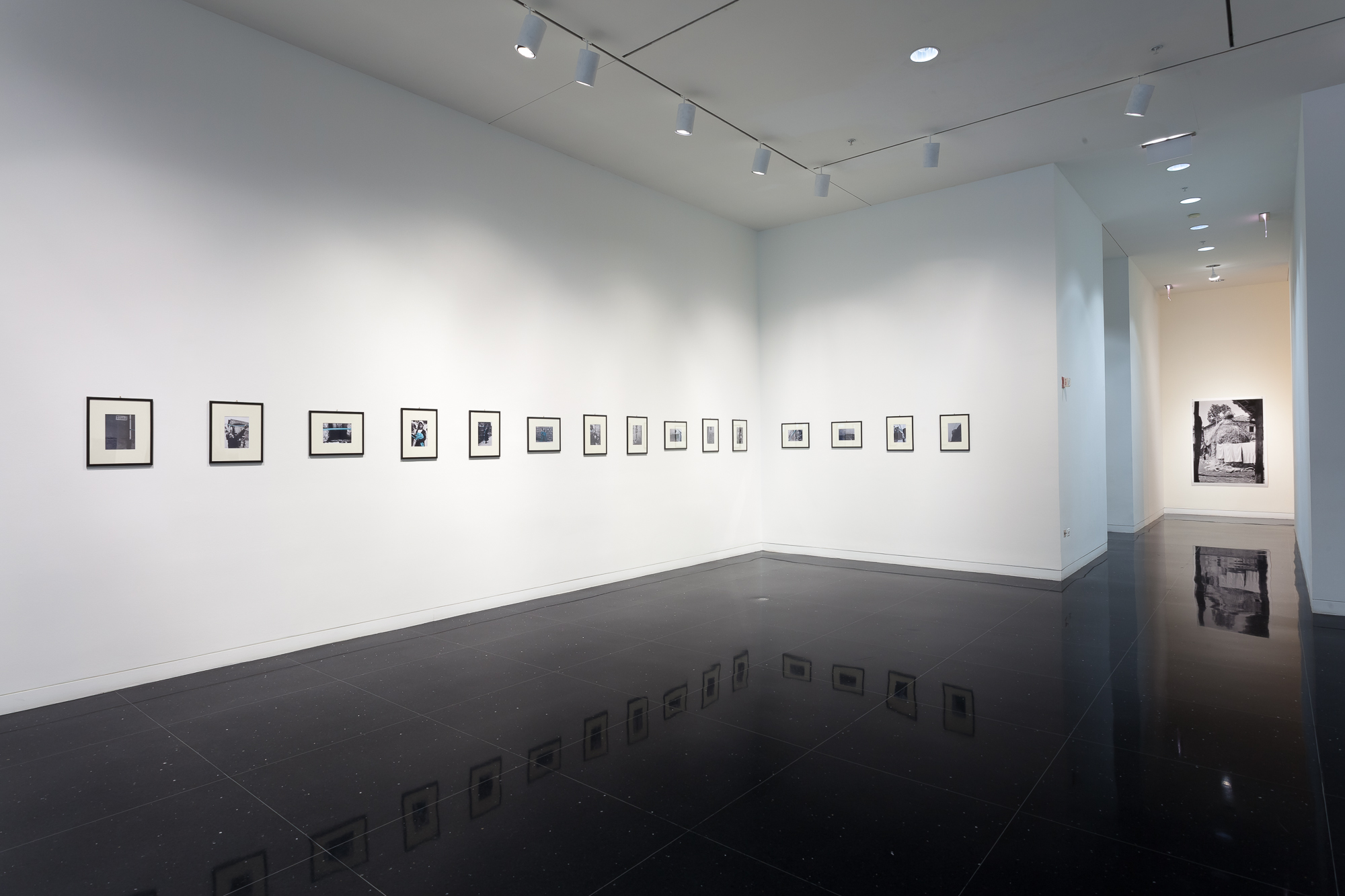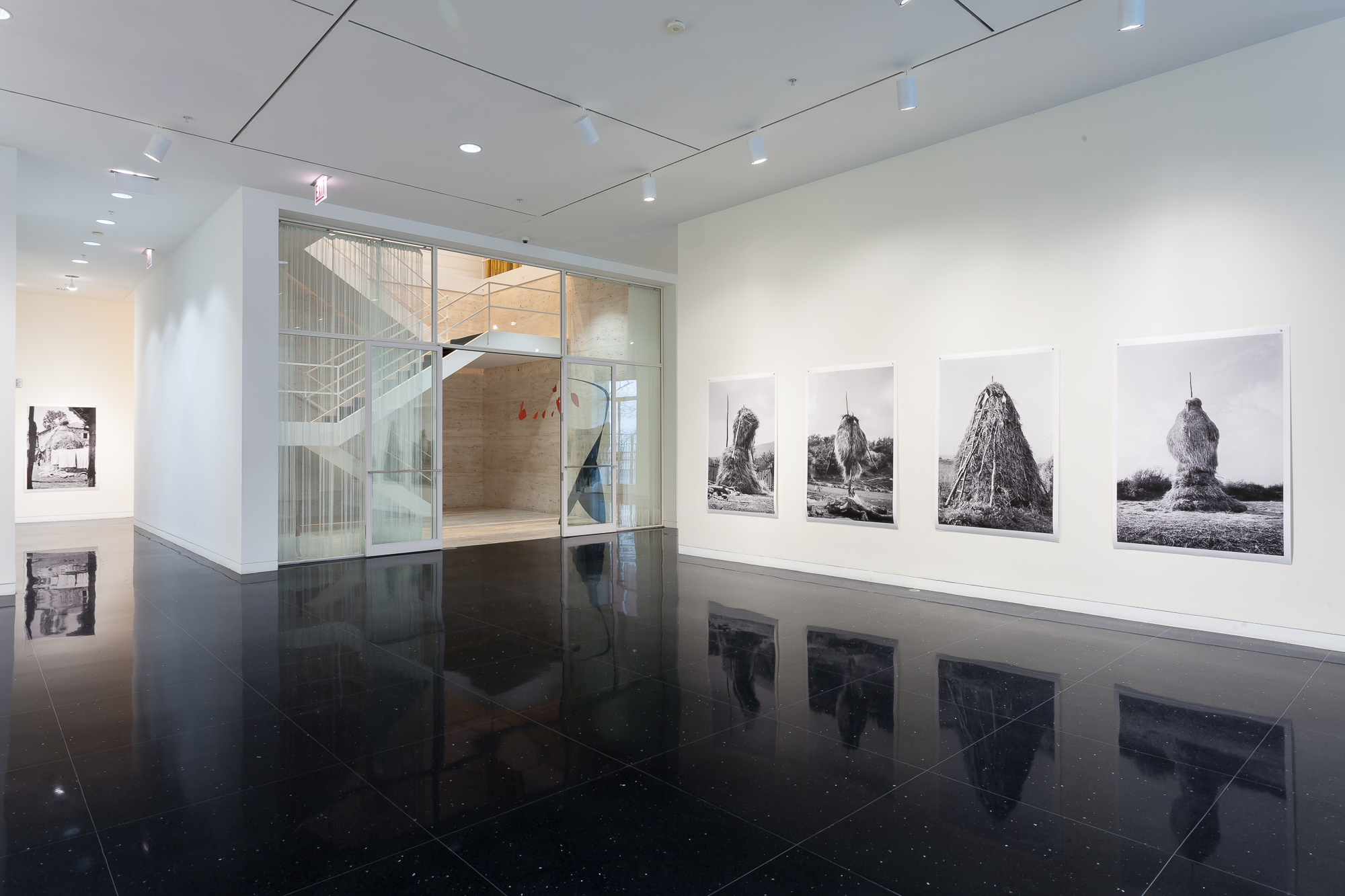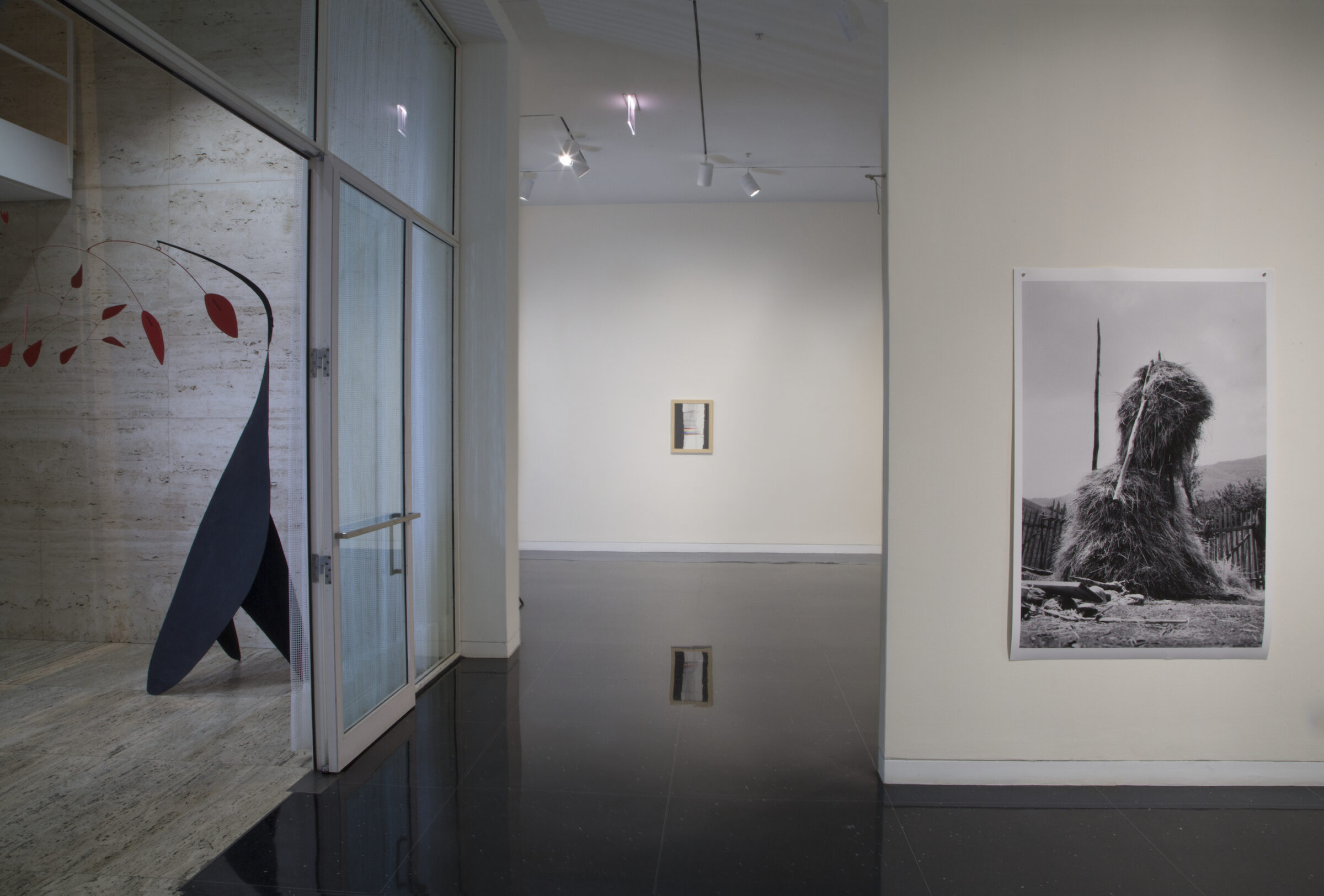the needle, the haystack, the thread
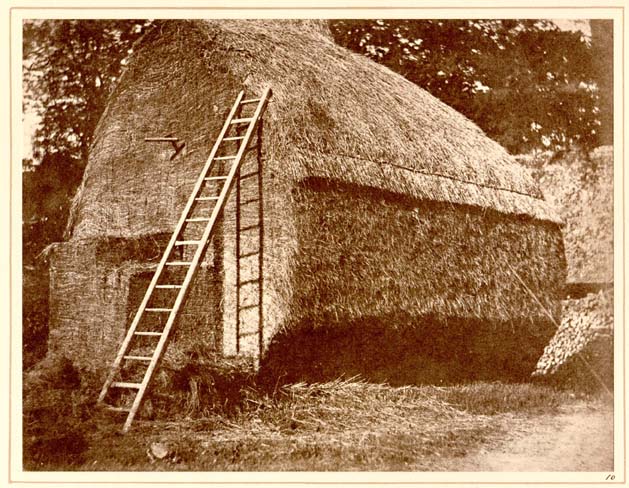

Past exhibition
the needle, the haystack, the thread
About the Exhibition
Stringing words together while working on this exhibition at The Arts Club of Chicago, the needle, the haystack, the thread made a certain sense, made a certain space for Britta Marakatt-Labba and Lala Meredith-Vula and Aboubakar Fofana and the late Maria Lai.
If these artists and the fruits of their labors cannot be easily summarized, thematized, named, tamed, or otherwise put in a proverbial drawer of available artistic or geographic or cultural criteria, their shared story is telling and wants to be told.
It speaks of a free association that keeps the society of things and thoughts and animals and plants and minerals and materials together. Humans take part. Yet they are not necessarily the center. There is no center. There is rather an invitation to connect and consider what is sometimes called traditional work or farm work or craft work anew.
Imagine between these artists, between their works, something like the red thread handed by Ariadne to Theseus to get him in and out of the Labyrinth.
Tending to their integrated ways of working and living (grounded in distinct traditions, advancing techniques shared across continents, and resistant to the soul-draining transformations of their communities wrought by violent histories of division and conquest) becomes our common task, however temporarily.
See it also as the seed of a sur-rural imaginary in an urban context.
This exhibition is guest-curated by Monika Szewczyk.
About the Artists
Living in France from a young age Aboubakar Fofana (b. 1967, Bamako, Mali) gained his artistic discipline through the practice of calligraphy and early work as a designer. Then, gradually, he shifted his focus to indigo and mineral mud dyeing as travels, and patient research, through his native West Africa brought him in touch with ancient and almost lost textile traditions. He is now one of the world’s leading exponents in fermented indigo dyeing and mineral mud-dyeing, and his work is helping to revitalize and revalue indigenous West African textile techniques and raw materials. He recently established a permaculture farm near Bamako in order to ensure autonomy in the full cycle of his production. Having supported local spinning, hand-stitching, embroidery, and weaving work, he now also cultivates tinctroial plants, including several varieties of Indigoferra, as well as cotton and edible plants.
In 1981, Maria Lai (b. 1919, Ulassai, Sardinia/Italy; d. 2013 Cerdedu, Sardinia/Italy) brought together residents of Ulassai, her birthplace in Sardinia, to execute a “monument of the living” in lieu of the war memorial that was requested of her. With a blue denim ribbon stretching from house to house to mountainside, Legarsi alla montagna (To Tie Oneself to the Mountain) was a means to connect the town’s inhabitants to each other and their ancient village known for its traditional looms and spectacular surroundings and their folk legends. On view are vintage photographs from the event, as well as a selection of drawings from distinct stages of the artist’s entire career, which spanned nearly eight decades and innovated whilst drawing endless inspiration from the tales and trades of her native Sardinia.
The thread acquires political significance for Britta Marakatt-Labba (b. 1951, Idivuoma, Sámpi/Sweden), who in 1979 cofounded the Sami Artist Group, a group formed to protest a dam encroaching on native territory, but more broadly to defend the self-determination and sovereignty of the Sami people native to Norway, Sweden, Finland, and Russia. Marakatt-Labba’s epic tapestries recount narratives from the Sami tradition, both mythic (such as the lives of goddesses) and quotidian (such as reindeer husbandry) as well as historic events such as the movement of the entire town of Kiruna, in traditional Sápmi lands in Sweden, to make room for the world’s largest iron ore mine; or the culling of reindeer, which devastates the livelihoods of her people. Through her free-embroidery technique, the forms are both delicate and insistent—with certain images composed to be read from both left and right, and thus never seeing progress in one direction.
Born in Sarajevo to a Kosovar Albanian father and a British mother, who brought her to the UK as a toddler, Lala Meredith-Vula (b. 1966, Sarajevo, Yugoslavia now Bosnia-Herzegovina) has been returning to the regions of her birth since her graduation form Goldsmiths College in 1988. In order to reconnect she chose to document haystacks as this simple rural subject—albeit one with fascinating precedents in the history of art—led her throughout the countryside and towards unforgettable encounters with people surviving regime change, remapping, and ethnic feuds; though some were also mobilizing historic reconciliations of blood feuds (which became the subjects of a separate series, Blood Memory). Yet it is the Haystacks, with their myriad distinct forms, or rather personalities, which have proven her most enduring subjects for three decades. The exhibition revisits the artist’s earliest forays into this rich field, with new prints on unframed fiber-based paper.
About the Curator
Monika Szewczyk (b. 1975, Szczecin, Poland) organizes exhibitions, writes, edits, and teaches—often in partnership with institutions of art and higher learning. She lives in Berlin and in Athens, where she moved to join the curatorial team of documenta 14. Previously, she was the inaugural Visual Arts Program Curator at the Reva and David Logan Center for the Arts, University of Chicago, 2012-2014; Head of Publications at the Witte de With Center for Contemporary Art in Rotterdam, 2008–2011; Assistant Curator at the Vancouver Art Gallery, 2004–2007; and, Program Coordinator of the Belkin Satellite, a downtown gallery of the Morris and Helen Belkin Art Gallery, University of British Columbia, 2001-2003.
